Was it a Fake?

Comparison of Project KTM to other Kroll Reports from that Era.
For a higher resolution of this see: a Genuine Kroll report as opposed to Kenya’s Project KTM you can also view this page as a PDF file
Project KTM 2004 Front Page Genuine Kroll Report 2004 Front Page
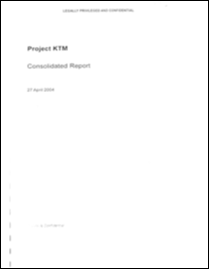
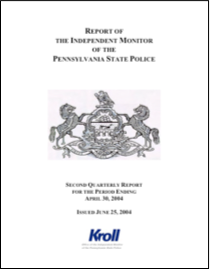
Arial Font Project KTM 2004
Serif Fonts: The usual choice for legal documentation
Arial Font: Kroll KTM 2004 … Palatino Font: Kroll 2005 GOC
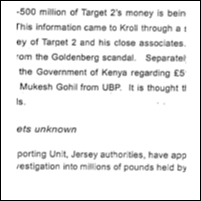
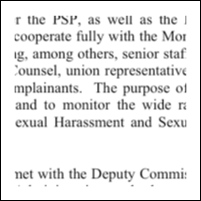
From Texas.edu Law School :
If you use a sans-serif font for a legal document, you do run a risk that it will seem informal. That’s why I recommend using a serifed font for most legal documents. The document will look professional and traditional. That’s safe. … I like these…Times New Roman, Georgia, Palatino
Charts:
Project KTM: Uneven alignment, simple table format (the thickened line bottom left may be an edit mark to indicate the table should be justified left, in which case the document would in draft form, if its not it indicates a lack of ‘Word’ skills) By comparison the 2005 Kroll Report to the GOC (lower) shows a very high level of organisation and chartmanship.

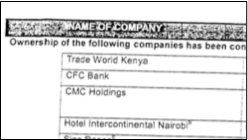
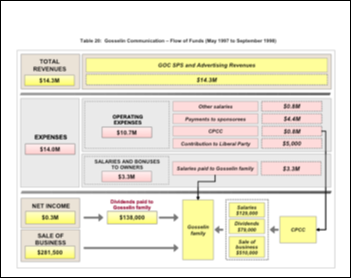
Readability: Project KTM v Pennsylvania State Police Report (Kroll 2004)
We subjected the entire text of each to the Flesch-Kincaid test reveals a score of Project KTM 45.38 (Grade level 11.3) Kroll PSPR 34.33 (Grade level 13.5)
ARI (Automated Readability Index) Scores Project KTM 9.71 Kroll PSPR 13.52
Both readability scores are open to interpretation by educationalists but generally speaking the two results both indicate that Kroll PSPR is written at an ‘undergraduate’ level whilst Project KTM is written to a younger 15yr + audience.
More significantly the Kroll PSPR report at 49 pages contains more characters (119, 213) and words (22,623) than the 110 page Project KTM (102,841 and 21, 722) thus the density of information in the Kroll PSPR is over double that of Project KTM. The ‘empty spaces’ in Project KTM come from extensive use of information snippets (names addresses company info etc) rather than reasoned sentences. Both genuine Kroll reports studied from the same era used more conventional academic techniques of logical written argument, and were therefore more densely worded. Both documents would be equally at home on a lawyers or an academics desk, whereas Project KTM looks like a secondary school (grade 10/11) set of notes, as reflected in the readability scores.
Qualifications:
Both genuine Kroll reports (PSPR and GOC) have an early section describing the suitability of the contracted company (Kroll) its personnel involved, and the commissioning person or body. PSPR lists the monitoring team and contributors by name, GOC includes the teams CV’s also as an appendix. This can be viewed here.
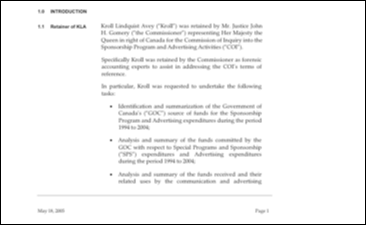

Project KTM however only has a vague generic reference :
There is no reference to the people involved in writing the report nor is there any explicit reference to the Government of Kenya, although this may be in the missing introduction page. Notice also that the genuine Kroll reports use page numbers and dates in the footer.
